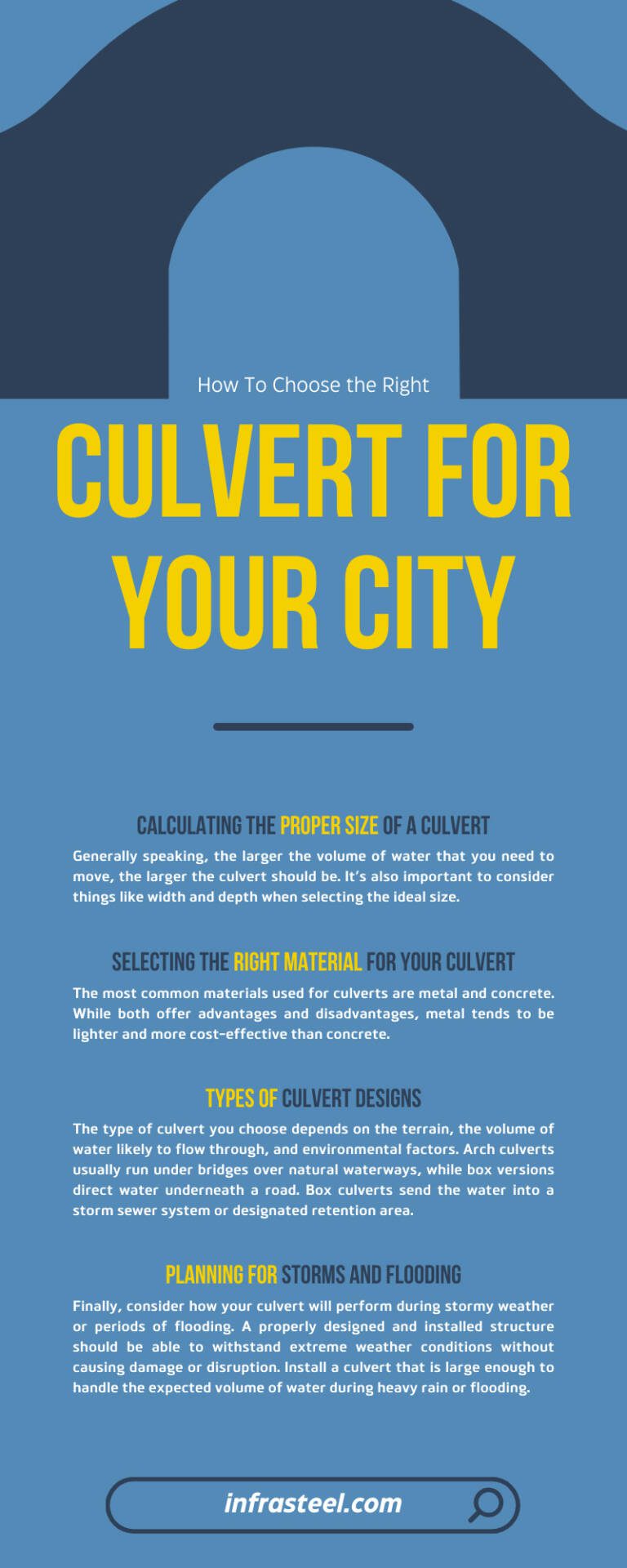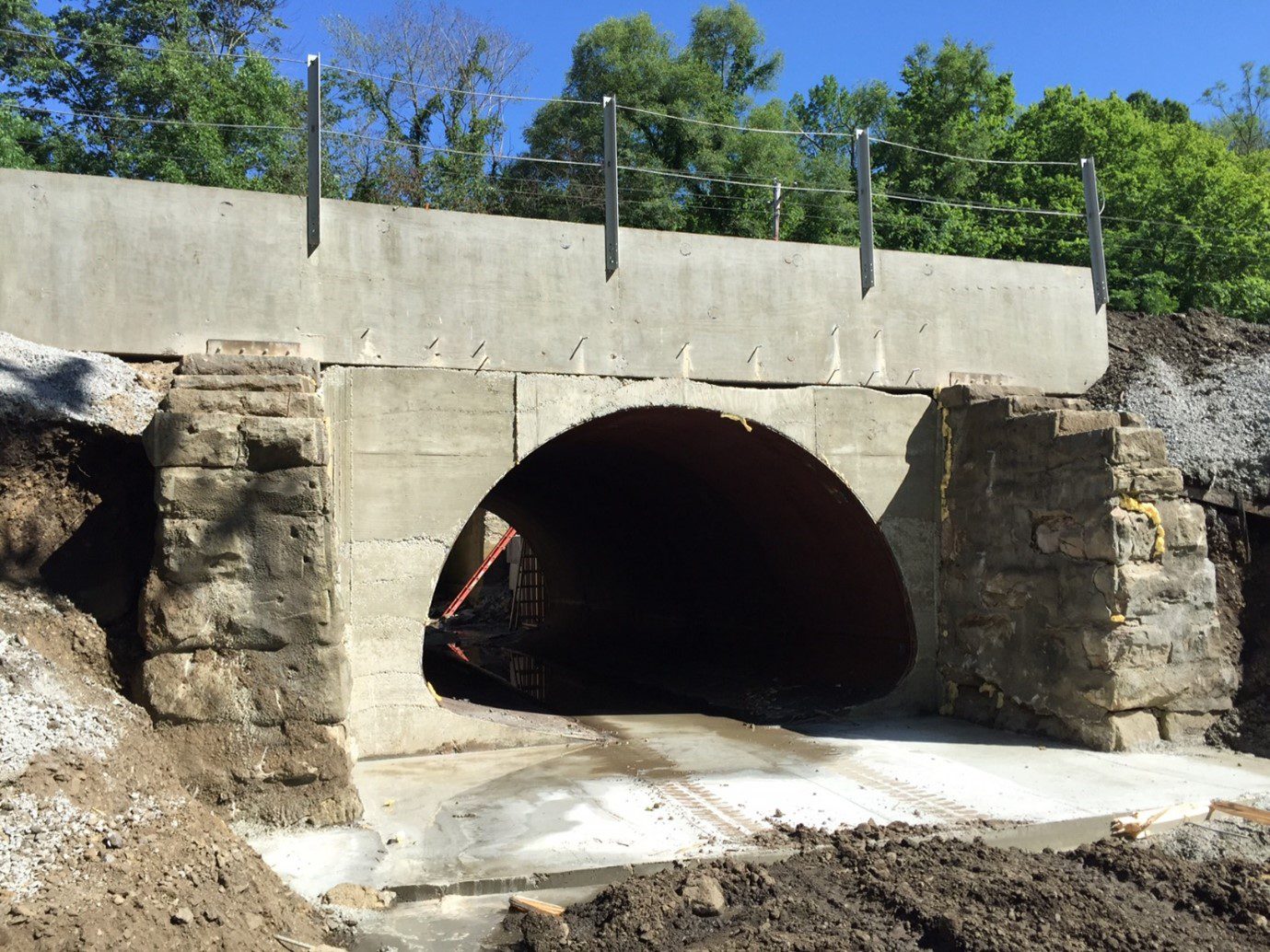Culverts are essential for many cities and towns across the world, providing an effective way to control the water moving from one place to another. However, choosing the right one for a particular situation isn’t as easy as it may seem. Learn how to choose the right culvert for your city by considering important factors like size, material, installation, and maintenance.
Determining Where Your City Needs Culverts
The first step in choosing the right culvert is to determine where you need it. Municipalities usually use these structures to move water from one place to another, such as under a roadway or between two bodies of water. It’s important to identify where and why you need a culvert to select the best option for your situation.
Culverts may facilitate continuous traffic flow across a bridge over a natural waterway, or they may redirect water that might overflow from a wetland adjacent to a road. They also handle stormwater runoff, and while they may not be able to prevent flooding entirely in extreme situations, they can reduce property and environmental damage when floods occur.
Calculating the Proper Size of a Culvert
Size is an important factor when it comes to selecting the right culvert for your city or town. The size of the structure depends on its intended use. Generally speaking, the larger the volume of water that you need to move, the larger the culvert should be. It’s also important to consider things like width and depth when selecting the ideal size. Additionally, you must calculate whether or not your city has enough space for the installation of a culvert.
Selecting the Right Material for Your Culvert
Once you have determined the size of your culvert, the next step is to select a material. The most common materials used for culverts are metal and concrete. While both offer advantages and disadvantages, metal tends to be lighter and more cost-effective than concrete.
Plastic pipes are also an option, as they are lightweight and easy to install, but they are more prone to wear and tear. Depending on the location and design, riprap (gravel or crushed rock) may be necessary to shore up embankments and reinforce the sides of a culvert or bridge. This prevents erosion and other damage caused by water flow.
Types of Culvert Designs
The type of culvert you choose depends on the terrain, the volume of water likely to flow through, and environmental factors. Arch culverts usually run under bridges over natural waterways, while box versions direct water underneath a road. Box culverts send the water into a storm sewer system or designated retention area.
Inlet and Outflow Considerations
Finally, consider the inlet and outflow when selecting a culvert. The inlet should be able to handle and control the volume of water flowing into the culvert. Meanwhile, the outflow should ensure that water drains away without damaging the culvert or the surrounding environment.
Inlet Control
These culverts control the flow of water by using specific methods, such as weirs, baffles, or aerators. Essentially, the inlet control is where the barrel of the culvert can accommodate more water than the entrance. This is ideal for high-volume water applications and can reduce the risks associated with flooding.
Outflow Control
Outflow control culverts slow or stop the flow of water from one area to another. These types are common in areas where flooding is a concern and can manage the risk associated with too much water entering an area. With an outlet control culvert, the barrel can’t allow as much flow as the inlet admits, effectively slowing and reducing the outflow.
Culvert Base and Slope
Culverts generally have either a natural stream bed or a concrete base that water flows over. Natural stream beds are popular since they are more cost-effective and require less maintenance than concrete bases. Concrete bases provide strength and stability, and they contain water flow to a limited area.
Another important factor is the culvert slope, as it determines how water will flow through it. It’s important to select a structure with the right slope in order to ensure that the water will move efficiently and without any obstructions.
Planning for Storms and Flooding
Finally, consider how your culvert will perform during stormy weather or periods of flooding. A properly designed and installed structure should be able to withstand extreme weather conditions without causing damage or disruption. Install a culvert that is large enough to handle the expected volume of water during heavy rain or flooding.
Installation Costs and Maintenance Requirements
Cost is a major factor in any infrastructure decision. Culvert barrels can be made of metal or plastic, or you can choose some made of more expensive concrete pipe. While steel can be a pricier option upfront, it tends to last much longer than other materials and requires less frequent maintenance.
A culvert’s durability depends largely on quality construction, maintenance, and repair. It’s best to hire an experienced culvert rehabilitation consultant or hydraulic engineer who can calculate the high flow and low flow points within a structure and design one accordingly. They will also be able to identify any potential issues before the problems become too costly or difficult to solve.
Before you decide to build an entirely new culvert, think about whether you can rehabilitate existing structures at a lower cost than a completely new construction or replacement. As culvert rehabilitation consultants, InfraSteel can show your city managers cost-effective slip-line solutions to deteriorating structures that won’t disrupt traffic as they remediate cracks, leaks, or flow issues.
The InfraSteel manufacturing process creates custom culvert linings in steel that are inserted directly inside existing structures. After setting the liner in place and filling the annulus with grout, you can effectively regulate water flow again. Plus, traffic disruption is minimized during this trenchless installation process.
Ultimately, choosing the right culvert for your city or town requires careful consideration of several factors, such as size, materials, and installation costs. By taking all these factors into account, you can ensure that the structure you select is suitable for your needs and will provide years of reliable service.




Leave A Reply